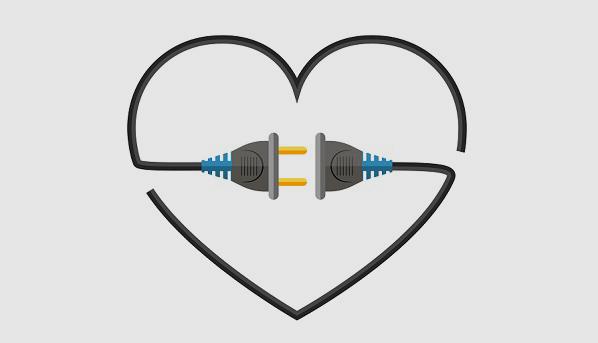His-Bundle Pacing Gains Support in Pilot Study
The approach provided clinical improvements similar to those seen with biventricular pacing, but bigger studies are needed.

For patients with heart failure who require cardiac resynchronization therapy (CRT) to correct left bundle branch block (LBBB), His-bundle pacing may be a feasible alternative to traditional biventricular pacing, a pilot randomized trial suggests.
His-CRT was possible in 72% of patients and provided improvements in echocardiographic parameters, symptoms, and physical function similar to those seen with biventricular-CRT, albeit with higher pacing thresholds, Michael Vinther, MD, PhD (The Heart Centre, Rigshospitalet, Copenhagen, Denmark), reported at the virtual European Heart Rhythm Association (EHRA) Congress 2021.
The findings were published simultaneously online in JACC: Clinical Electrophysiology.
Searching for Alternatives
Though biventricular-CRT has been an established treatment for patients with symptomatic heart failure and LBBB for over a decade, it has limitations, Vinther said, pointing to the difficulty of finding a spot to place the LV lead in many patients and the possibility of phrenic nerve stimulation and high pacing thresholds in others.
His-bundle pacing, thought to perhaps provide better activation of the heart’s electrical system, has emerged as a potential alternative. With it, “we’re using the conduction system as it was supposed to be used,” Vinther said. “We can almost get normal conduction in those that we can succeed in placing the lead in the right spot.”
A prior randomized trial with 41 patients—called His-SYNC—showed similar changes in ECG and echocardiographic parameters with either His-CRT and biventricular-CRT, but definitive studies are lacking.
We hope that our study, among others, can pave the way for a larger randomized study that can establish the position of His-CRT as either superior or noninferior to BiV-CRT. Michael Vinther
The current study, called His-Alternative, got started before His-SYNC and was designed as a single-center pilot. It included 50 patients (mean age 66 years; 64% men) who had symptomatic systolic heart failure, LBBB defined according to strict criteria, and an indication for CRT. Most patients (78%) had nonischemic cardiomyopathy, with an average LVEF of 29% at baseline.
Patients were randomized to a first attempt with either His-CRT or biventricular-CRT; the alternate approach was tried if that failed. Ultimately, the planned lead was placed in all but one patient in the biventricular group, whereas seven patients in the His-CRT group (28%) needed to crossover to biventricular pacing. That was mostly because the threshold required to capture the left bundle was too high in those patients, Vinther said.
Procedure time was longer in the His-CRT group (137 vs 102 min; P < 0.01), with no differences in fluoroscopy time or radiation dose.
In the intention-to-treat analysis, both types of pacing improved QRS duration, LVEF (increasing to about 45%), LV end-systolic volume (decreasing by about 35%), NT-proBNP level, 6-minute walk distance, and NYHA class after 6 months, with no differences between trial arms.
In a per-protocol analysis, patients treated with His-CRT had a significantly higher LVEF (48% vs 42%) and lower LV end-systolic volume (65 vs 83 mL; P < 0.05 for both) at 6 months compared with those treated with biventricular pacing. Vinther et al note in their paper, however, that “we did not correct for multiple comparisons, so these differences [have] to be evaluated with caution.”
Pacing thresholds were higher in the His-CRT versus biventricular-CRT group at baseline (1.8 vs 1.2 V) and at 6 months (2.3 vs 1.4 V; P < 0.05 for both), indicating that His-CRT will drain batteries more quickly and require more-frequent device changes, Vinther said.
Still Awaiting Definitive Comparison
Commenting for TCTMD, EHRA President Christophe Leclercq, MD, PhD (Centre Hospitalier Universitaire de Rennes, France), called the findings interesting and characterized His-bundle pacing as promising. But he highlighted the limitations of this study, including its relatively small sample size and the fact that it was performed at a single center. Moreover, he added, the high rate of crossover from the His-CRT group indicates that “it’s not so easy to correct LBBB by His-pacing.”
Even so, this study shows that “His-pacing is doing as well as CRT for the patient with left bundle branch block and a CRT indication,” Leclercq said. He added, however, that there is still a lack of strong evidence regarding the comparison between His-bundle pacing and conventional CRT, and larger, multicenter studies with longer follow-up are needed.
“The level of evidence for me is still low, because it’s a small number of patients,” Leclercq said. “It’s another interesting study, but for me, my clinical practice, I cannot apply His-pacing with strong evidence.”
I think that if one fails to implant a CRT lead, this is quite good data to show that . . . His-pacing is a useful alternative. Francisco Leyva
Francisco Leyva, MD (Queen Elizabeth Hospital, Birmingham, England), who served as a discussant after Vinther’s presentation, echoed the call for further randomized trials to evaluate His-CRT. “But as it stands,” he said, “I think that if one fails to implant a CRT lead, this is quite good data to show that . . . His-pacing is a useful alternative.”
Vinther acknowledged that His-pacing is not yet ready to be considered as a first-line therapy in clinical practice, noting that the required tools are not yet optimal, that failure to implant the leads will be more frequent, and that thresholds will be higher.
“We can hope that with better tools and maybe also better leads or maybe even other pacemakers, we could overcome that in the future,” Vinther told TCTMD. “But that depends on how widespread . . . this way of pacing will become and if the companies will buy into that and try and provide us with better tools or more-suitable pacemakers.”
He agreed that additional trials with longer follow-up are required. “But I think it’s proven now that you can do it in a lot of patients and at least if you cannot place an LV lead for some reason—because of high thresholds or phrenic nerve stimulation or something like that—His-pacing is feasible alternative,” he said. “That’s the least you can say now, but as a first-line therapy, I don’t think it’s ready yet and we need bigger studies and multicenter studies.”
Vinther said his team was enthusiastic about the potential of His-pacing before undertaking the study, and now that the results are out, “we are even more enthusiastic. . . . We think the future is bright for pacing.”
Todd Neale is the Associate News Editor for TCTMD and a Senior Medical Journalist. He got his start in journalism at …
Read Full BioSources
Vinther M, Risum N, Svendsen JH, et al. A randomized trial of His pacing versus biventricular pacing in symptomatic heart failure patients with left bundle branch block (His-Alternative). J Am Coll Cardiol EP. 2021;Epub ahead of print.
Disclosures
- The study was funded by a research grant from the Clinical Research Unit at the Heart Centre, Rigshospitalet.
- Vinther reports no relevant conflicts of interest.





Comments